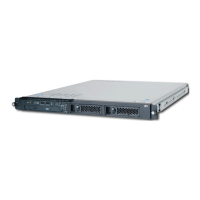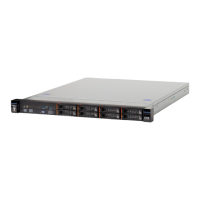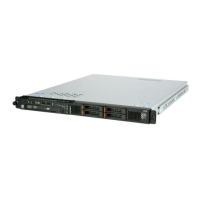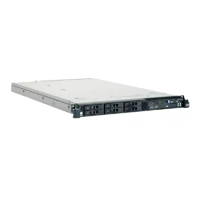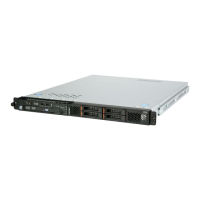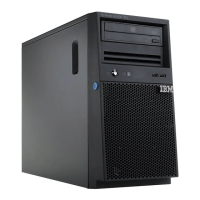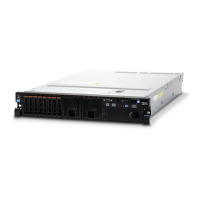Select this choice to view the complete log of POST error messages. If an
optional IBM Remote Supervisor Adapter II SlimLine is installed, the log also
contains system-event messages. Use the arrow keys to move between
pages in the log.
Run the diagnostic programs to get more information about error codes that
occur. See the Problem Determination and Service Guide on the IBM System
x Documentation CD for instructions.
To clear the system-event/error log, press Enter while you are viewing a log
entry.
v Save Settings
Select this choice to save the changes that you have made in the settings.
v Restore Settings
Select this choice to cancel the changes that you have made in the settings and
restore the previous settings.
v Load Default Settings
Select this choice to cancel the changes that you have made in the settings and
restore the factory settings.
v Exit Setup
Select this choice to exit from the Configuration/Setup Utility program. If you have
not saved the changes that you have made in the settings, you are asked
whether you want to save the changes or exit without saving them.
Passwords
From the System Security choice, you can set, change, and delete a power-on
password and an administrator password. The System Security choice is on the
full Configuration/Setup Utility menu only.
If you set only a power-on password, you must type the power-on password to
complete the system startup; you have access to the full Configuration/Setup Utility
menu.
An administrator password is intended to be used by a system administrator; it
limits access to the full Configuration/Setup Utility menu. If you set only an
administrator password, you do not have to type a password to complete the
system startup, but you must type the administrator password to access the
Configuration/Setup Utility menu.
If you set a power-on password for a user and an administrator password for a
system administrator, you can type either password to complete the system startup.
A system administrator who types the administrator password has access to the full
Configuration/Setup Utility menu; the system administrator can give the user
authority to set, change, and delete the power-on password. A user who types the
power-on password has access to only the limited Configuration/Setup Utility menu;
the user can set, change, and delete the power-on password, if the system
administrator has given the user that authority.
Power-on password
If a power-on password is set, when you turn on the server, the system startup will
not be completed until you type the power-on password. You can use any
combination of up to seven characters (A – Z, a – z, and 0 – 9) for the password.
Chapter 3. Configuring the server 41
